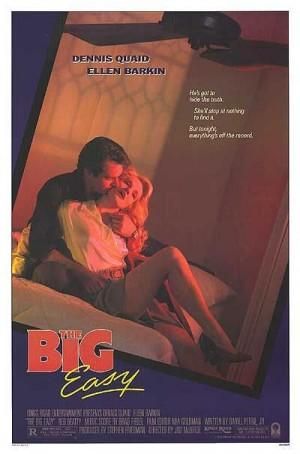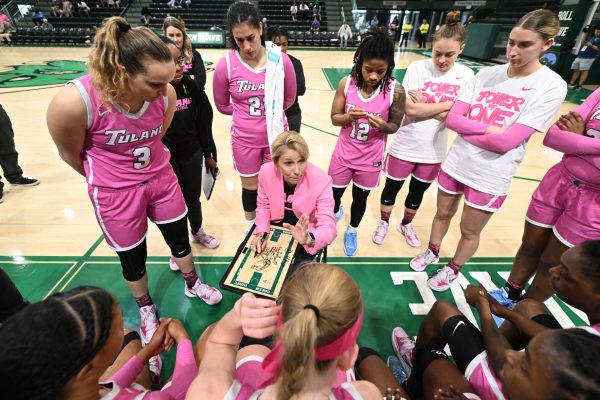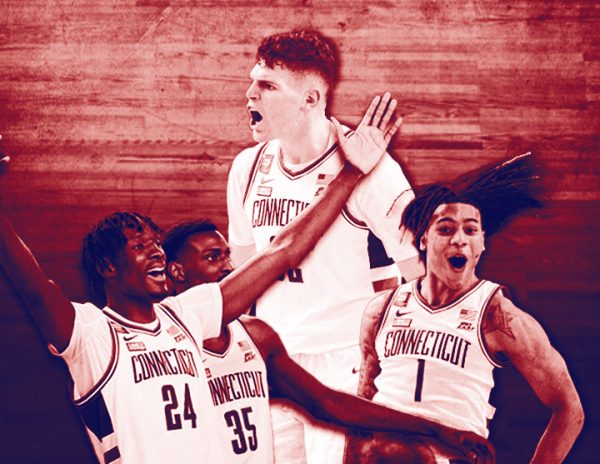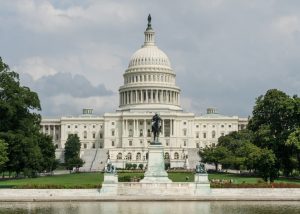No headline provided

March 2, 2012
The Big Easy
The neo-noir thriller “The Big Easy” portrays a New Orleans not unlike the one we love today – colorful, laid-back, sexy and slightly immoral. The film centers around New Orleans police lieutenant Remy McSwain (Dennis Quaid), whose department is rife with corruption. McSwain is the stereotypical corrupt cop: He freely runs red lights, eats at restaurants on the cuff and dips into the precinct’s “Widows and Orphans Fund.” Though at times his ethics are laughably questionable, McSwain is planted on the right side of the law when it comes to murder.
McSwain’s comfortable lifestyle is threatened, however, when the Justice Department sends beautiful District Attorney Ann Osborne (Ellen Barkin) to investigate police corruption. Unlike McSwain, Osborne is serious, ambitious and has an unwavering sense of right and wrong. When the two are forced to work together to investigate a series of grisly gang murders, they find themselves undeniably attracted to each other. The ensuing sexual tension, ethical dilemmas and gang shoot-outs take the pair on a deadly tour of the Crescent City.
Director Jim McBride uses local Cajun music and familiar city institutions such as Tipitina’s to create an authentic New Orleans atmosphere in the movie. Quaid and Barkin make for a steamy and volatile couple but manage to give powerful performances as individuals. The movie won many independent film awards and was the first film to ever be sold at the Sundance Film Festival. – Lucy Stratton
Trombone Shorty
There’s no shortage of talented jazz musicians in New Orleans. What makes Troy “Trombone Shorty” Andrews different from the others isn’t his talent, though he has it in bounds. Andrews is one of the brightest jazz stars of his generation and a local idol because he pushes the traditional definition of jazz, blending hip-hop, hard rock and R&B with local jazz, fun and soul.
Growing up in the Trem?© neighborhood in the Sixth Ward, he was a bandleader by age 6, playing drums, trumpet and trombone and gaining a reputation for charismatic showmanship. His distinctive sound, a concoction he describes as “Supafunkrock,” evokes the feel of a brass band that exalts in modern musical culture, reflecting a youthful energy that understands but challenges tradition. This unique combination has drawn international musicians to Andrews and his band, Orleans Avenue, leading to collaborations with everyone from Allen Toussaint to Lenny Kravitz and Jeff Beck.
His latest album, “For True,” could easily be the city’s Mardi Gras soundtrack. The sounds of Andrews’ exuberant brass, surprising beats and funk-ified bass lines are played from the balconies on Frenchmen Street and out of storefronts, sending parade-goers dancing through the streets. His Lundi Gras show at Tipitina’s, one of the nearly 200 shows per year that he plays internationally, sold out the house and generated more buzz than most of the season’s parties. That’s the thing about Trombone Shorty – he’s distinctly New Orleans, but he understands and successfully embraces the changing global music landscape. New Orleans doesn’t love Trombone Shorty because he’s ours – we love him because he belongs to everyone. – Stephanie Chen
Interview with the Vampire
Not all vampires are well-coiffed teen heartthrobs. Some vampires do more than brood and cast tortured glances at the camera. Some vampires – wait for it – actually kill people. Nowhere is this more true than in 1994’s big screen adaptation of New Orleanian Anne Rice’s novel “Interview with the Vampire.” Along with the requisite powdered face make-up and prosthetic fangs, the film features yet another genre mainstay – the city of New Orleans.
The Crescent City carries a rich and storied tradition of vampire lore: The eternally damned sanguines are believed to have skulked about town since its colonization in the early 18th century. “Interview with the Vampire” is a product of the city’s decades-long preoccupation with the undead, as well as Tom Cruise and Brad Pitt’s dashing hair extensions. The film stars the aforementioned oddly miscast stars alongside Antonio Banderas, Christian Slater and Kirsten Dunst.
While the thought alone of Tom Cruise in period attire would likely strike fear in the hearts of both young and old, the film is worth a look for its marvelously atmospheric rendering of the French Quarter. The city is depicted as a plague-ridden hotbed of depravity occupied by vagrants and vampires. The film follows Louis (Pitt) on his existential struggle to locate the humanity in his immortal condition. Between philosophical musings and moral crises, “Interview with the Vampire” offers a healthy dose of bloodshed and gore, and most importantly, these vampires do not sparkle. – Rachel Weiss
Better Than Ezra
Though someone north of the Mason-Dixon line might recognize the raw, growling sound of a Better Than Ezra track, most would be physically incapab/./le of identifying the men behind the songs. The music of Better Than Ezra, however is quite well-known along the Gulf Coast, especially among New Orleanians.
During their college careers at LSU, Kevin Griffin and Tom Drummond formed Better Than Ezra, and gave their first live performance at Murphy’s Bar in Baton Rouge. With the addition of drummer Michael Jerome in 2009, the band has seen much success over the last 20 years, churning out eight studio albums and several hit singles.
For one to truly embrace Better Than Ezra, a few key songs other than “Good” and “A Lifetime” one must download the following: the mouth-dropping falsetto of Griffin rings throughout all four minutes of “Juicy,” hitting notes that many female singers would envy; “Extra Ordinary” marks the first song in which Better Than Ezra employed a DJ to mix tracks, a move that created a unique sound in the alternative rock genre. No fan of Better Than Ezra would be a true “Ezralite,” however, without the band’s ode to the greatest city in the world, “King of New Orleans.”
Luckily for Louisianians and Tulane students, Better Than Ezra will never abandon New Orleans’. With their own studio, the group is based in the city. The band has performed countless times in the area, from Family Gras in Metairie, to the House of Blues downtown, and Jazzfest at the Fairgrounds, and it has played in music festivals along the Gulf Coast. While Better Than Ezra has not appeared any lineups so far, the name Better Than Ezra will no doubt pop up soon. – Abbie Levenson
Bad Lieutenant: Port of Call New Orleans
Post-Hurricane Katrina New Orleans had its fair share of villains, and only a handful of unsung heroes’ efforts salvaged the city – not you, Anderson Cooper. No one, however, stands so perfectly between hero and villain than Terrence McDonagh (Nicholas Cage) in “Bad Lieutenant: Port of Call New Orleans.” The film, directed by Werner Herzog, depicts Cage as a Vicodin-popping detective who seems to do everything wrong, but gets everything right. In the aftermath of Hurricane Katrina, McDonagh saves an abandoned prisoner, investigates a Mid-City massacre and regularly siphons heroin from the evidence locker. Herzog’s “reimagining” of the original “Bad Lieutenant” follows McDonagh as he investigates the murder of five Senegalese immigrants. It is a typical AWOL-detective story, just with more cocaine, weird reptile mofits and a lot of screaming from Cage.
Aside from being a bacchanalian and masterfully shot guilty pleasure – it is a Cage film – “Bad Lieutenant” represents that elusive balance that New Orleans struggles to find. Cage’s character blows through enough narcotics to kill Charlie Sheen, all the while dating a stunning Frankie Donnenfeld (Eva Mendes) and earning promotion after promotion. He manages, in a deep state of inebriation, to tackle everything life hurls at him. This city, unfortunately, has yet to find a similar balance. New Orleans can orchestrate a marvelous Mardi Gras season but cannot organize a proper evacuation route. New Orleans, much like McDonagh, tends to get messed up in more ways than one. McDonagh just shows us how to get away with it.
James Lee Burke
For the last half of his 50-year writing career, author James Lee Burke has churned out detective novels at a rate that would even make “Hardy Boys” creator Edward Stratemeyer envious. His primary subject is Detective Dave Robichaux, a recovering alcoholic and Cajun police detective. Dave’s adventures take him all over the country, but the lion’s share of his cases take place right here in and around the Big Easy. Burke presents all sides of New Orleans culture, from gang violence to corrupt city officials, to greedy film producers, to illiterate blues guitarists. His skillful pen leaves no aspect of New Orleans untouched. Burke does not shy away from the characteristics that make this city such a terribly beautiful place. Burke uses Robichaux as a vehicle to examine the inner machinations of the Crescent City. He fills his books with adventure, personal struggle, love, violence and New Orleans flavor. Robichaux may be the main character, but the setting also plays a major role in the novels. The intricate world that Burke puts on the page will engross fans of both New Orleans and the hardboiled detective novel. For those interested, the first novel in the Dave Robichaux story, The Neon Rain, is a good place to start. – Hud Coley
A Streetcar Named Desire
The Tennessee Williams New Orleans Literary Festival celebrates the city’s rich literary history. The festival honors one of the city’s most indelible staples on American culture: “A Streetcar Named Desire.” The real highlight of the Tennessee Williams Festival for me remains its Stella shouting contest, which is free and open to the public. Each year, it awards prizes to the impersonator who can best rock the cobblestones of Jackson Square with Marlon Brando’s signature howl. Catch the roar at 4:15 P.M. March 25.
This year, Southern Rep is staging “Streetcar” in the very neighborhood the play is set, at the Michalopoulos Studio on Elysian Fields Avenue. The show boasts a veritable who’s who of the local theater community, including Tulane Shakespeare Festival veteran costume designer Cecilia Covert and professor Mike Harkins and revives the iconic New Orleans tradition in what promises to be a highlight of this year’s theatrical season. The company will hold a free walking tour, one hour before the show, which runs Thursday to Sunday, March 22 through April 15, at 7:30 P.M. Friday and Saturday and 3:00 P.M. Sunday. Cash-only student rush tickets are available for $10 with student identification 15 minutes prior to every performance. – Hope Barnard
Lil Wayne
Dwayne Michael Carter Jr. was born and raised on the corner of Apple and Eagle streets in the Hollygrove neighborhood of New Orleans. He began his career at age 9 when he was signed to Cash Money Records, the brainchild of fellow NOLA native Bryan “Birdman” Williams. Throughout his career, Carter’s New Orleans roots have influenced everything from his many nicknames to his music itself. Carter has acquired a whole slew of alter egos, including “The New Orleans Nightmare” and “Weezy F. Baby,” with the “F” sometimes standing for FEMA (or ferocious, or franchise, or finisher, etc.), a clear reference to the federal agency’s failed involvement in the Hurricane Katrina recovery process. Carter has also been dubbed “Young Popeye,” a nod to the Louisiana-based fast food chain.
Carter’s songs create a timeline of his experiences in New Orleans, starting with the song “La La La,” which he begins with a short biography: “Born in New Orleans/ Raised in New Orleans/ I will forever remain faithful New Orleans.” Perhaps Lil Tunechi is referencing his tradition of returning to his hometown every Thanksgiving to help distribute turkeys to the homeless or his effort to visit New Orleans during each of his many concert tours.
Another major NOLA shout-out can be found in Weezy’s verse on Brisco’s “In The Hood:” “Uptown New Orleans like always/ Cash Money Boys shine like bald heads.” Carter also mentions former NFL defensive back Gary Barbaro, who also hails from the Big Easy.
In the song “Tie My Hands,” off his 2008 platinum-selling album Tha Carter III, Wayne uses Hurricane Katrina as a metaphor for the struggles he faced growing up in Hollygrove and the unsure future of his city. He also expresses his discontent with the city’s disaster relief efforts, saying that he feels he has been left to support New Orleans on his own: “Take away the football team, the basketball team/ All we got is me to represent New Orleans/ No governor, no help from the mayor/ Just a steady beating heart and a wish and a prayer.”
Lil Wayne wouldn’t be Lil Wayne if he hadn’t been raised here, and as one of the biggest stars in contemporary music, we should be glad that Mr. Make-It-Rain-On-Them-Hoes is so proud to rep his city. In a time when the national zeitgeist still often associates NOLA with images of destruction and chaos, it’s refreshing to see a former resident achieving such success while remembering his roots and remaining a local presence. – Halle Kaplan-Allen






















Leave a Comment